Why Choose ZigiOps as Your Enterprise-Grade ServiceNow Integrator
Secure, real-time, no-code ServiceNow integrator for enterprise teams.


Integration Challenges: Why ServiceNow Still Feels Hard to Connect
Integrating ServiceNow with other enterprise systems shouldn’t require decoding an endless web of APIs, scripts, and authentication errors. Yet, for many IT teams, that’s still the daily struggle. Every time ServiceNow needs to sync with Jira, Azure DevOps, or BMC Remedy, you risk data mismatches, broken automations, and long debugging cycles.
A single misaligned field or permission change can cause cascading failures across incidents, tasks, and problems. For enterprises running strict SLAs, even a small delay in synchronization can translate into missed deadlines, frustrated teams, and poor visibility across departments.

That’s why more organizations are moving toward no-code, enterprise-secure integration platforms. ZigiOps isn’t just another connector — it’s a complete integration engine purpose-built for ServiceNow and the complex realities of ITSM, DevOps, and ITOM ecosystems.

How to Integrate ServiceNow and Jira Without Coding
ZigiOps makes ServiceNow–Jira integration effortless. What used to take weeks of scripting can now be configured in under 30 minutes — and without writing a single line of code.
Here’s what a typical setup looks like:
1. Log In and Define Your Systems
After accessing the ZigiOps web console (via HTTPS://<IP/FQDN>:8585), you’re greeted by a clean, guided interface. Select ServiceNow as one system and Jira as the other.

You can choose specific entities like Incident, Problem, or Change Request from ServiceNow and Task or Bug from Jira.
ZigiOps supports both cloud and on-premises deployments with secure API-based communication. It also provides ready-made templates, such as ServiceNow Incidents to Jira Tasks, to jumpstart your integration.
2. Authenticate Securely
Each system uses encrypted authentication methods — including API tokens, OAuth, or username/password.

All credentials are AES-256 encrypted (FIPS 140-2 compliant) and never stored outside your environment. ZigiOps supports custom SSL certificates for both its web console and listener modules, ensuring full compliance with enterprise security standards.
3. Configure Data Flow and Field Mapping
This is where the no-code configurator shines. Define what should move between ServiceNow and Jira:
- Incident Summary → Jira Summary
- Description → Description
- Priority → Urgency
- Comments/Work Notes ↔ Jira Comments

You can use ZigiOps’ visual mapping builder to configure these links or adjust existing templates. Each mapping supports nested data objects (like related comments or attachments) and complex transformation rules.
Behind the scenes, ZigiOps uses CRUD operations through the systems’ APIs, but users only see the clean interface.
4. Define Triggers and Conditions
ZigiOps allows fine-grained control over when data moves. For example:
- Trigger only when a new ServiceNow incident is created.
- Filter out updates made by the integration user to prevent loops.
- Use priority = high as a condition to sync only critical tickets.
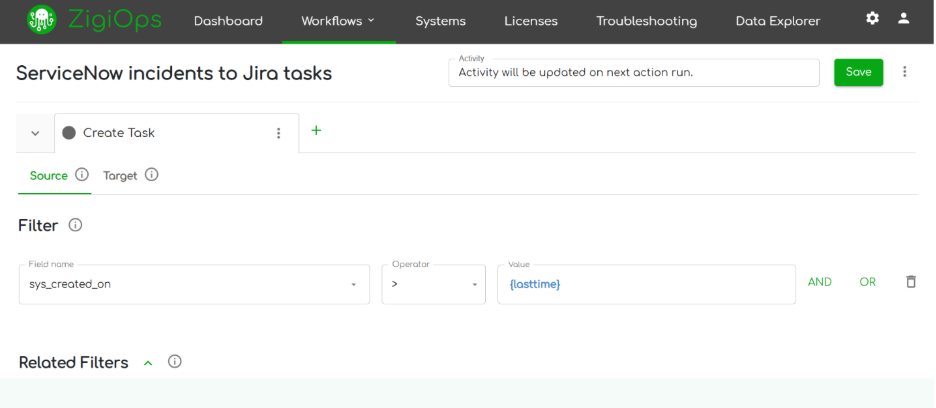
Technically, ZigiOps uses expressions such as {lasttime} or {lastupdated} to ensure it only collects records modified since the last run. This prevents duplicates and reduces unnecessary API calls.
5. Establish Correlation Logic
Each ServiceNow record synced to Jira carries a correlation field (e.g., the ServiceNow correlation_id stores the Jira issue key).
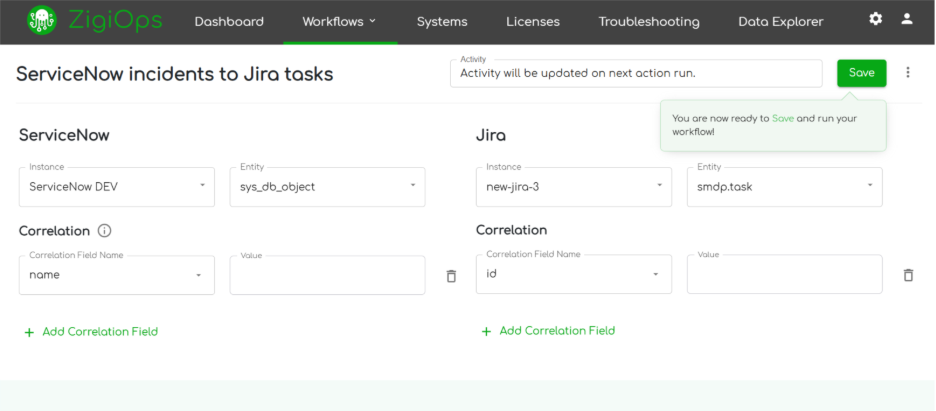
This one-to-one mapping ensures that updates flow both ways without mismatched entities. When a Jira issue changes status to Done, ZigiOps automatically updates the ServiceNow incident to Resolved.
6. Test, Monitor, and Scale
Once mapping and triggers are set, run a test sync to verify that records move as expected. From the monitoring dashboard, you can track every transaction in real time — complete with logs, status messages, and retry options.
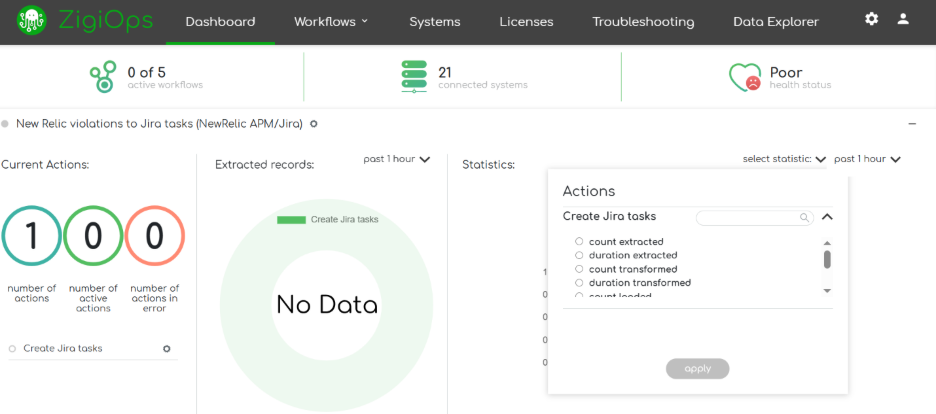
ZigiOps provides detailed logs for every API call and supports real-time alerts on failure. Whether it’s a permission error or network issue, the platform helps you identify the root cause immediately.
From there, scaling is simple: ZigiOps supports unlimited transactions and concurrent integrations, so you can connect ServiceNow not just to Jira but to Azure DevOps, BMC Remedy, or any other supported system.
Going Beyond Jira: ServiceNow Integrations with Azure DevOps and BMC Remedy
While ServiceNow–Jira remains the most common use case, ZigiOps enables equally seamless integrations with Azure DevOps, BMC Remedy, and many others.

- ServiceNow ↔ Azure DevOps: Sync incidents to work items bi-directionally. Development teams can update bug statuses in Azure DevOps, which reflect instantly in ServiceNow. Use expressions like {lastchangelog} to ensure no duplicate updates are sent.
ServiceNow - Azure DevOps Integration
- ServiceNow ↔ BMC Remedy: Exchange incidents, changes, or problems with full traceability. ZigiOps ensures correlation via Ticket ID or Incident Number, preventing duplication and data mismatches.
ServiceNow – BMC Remedy Integration
Each of these integrations leverages the same ZigiOps framework, meaning you can reuse templates, authentication settings, and even license points across systems.
Why Enterprises Choose ZigiOps as Their ServiceNow Integrator
1. Enterprise-Grade Security
ZigiOps is ISO 27001 certified and follows a zero data storage policy. No information ever leaves your infrastructure. All communication is TLS 1.2 encrypted, and you can harden UI access further using IP whitelisting or multi-factor authentication.
Even advanced configurations, such as importing SSL certificates to the keystore, are fully documented and supported via both GUI and CLI.
2. Scalability and High Availability
ZigiOps supports both vertical and horizontal scaling. Whether you’re handling 10,000 or 100,000 records per hour, performance remains consistent. The high availability (HA) setup includes a Primary and Backup ZigiOps server with shared runtime synchronization. Failover can be triggered manually or automatically, ensuring no data loss or downtime during maintenance.
3. True No-Code Experience
Every aspect of integration setup — from field mapping to condition logic — happens through the web interface. Yet behind that simplicity is a robust engine capable of handling complex REST operations and data transformations.

Predefined workflow templates for ServiceNow–Jira, ServiceNow–Azure DevOps, and other combinations mean even large-scale enterprise integrations can go live in minutes.
4. Licensing Built for Flexibility
ZigiOps licenses are bound to your host’s IP or FQDN and use a point-based system. Each pair of systems (e.g., ServiceNow–Jira) consumes one license point, allowing unlimited integrations between those instances. No record limits, no hidden fees. Optional record-based limits can be applied for monitoring or compliance purposes.
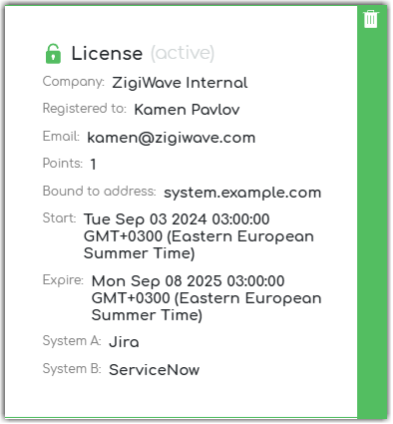
5. Proven Reliability and Support
ZigiOps powers integrations for Fortune 500 enterprises in telecom, government, finance, and healthcare. Each deployment comes with dedicated support from engineers who specialize in ITSM, DevOps, and monitoring integrations.
The ZigiOps Knowledge Base offers advanced guides on field mapping, certificate management, and troubleshooting, ensuring users stay self-sufficient.
Real-World Example: Telecom Enterprise Boosts IT Efficiency with ZigiOps
A global telecom leader struggled to maintain visibility between its ServiceNow ITSM and Jira Software environments. Manual ticket updates led to duplicate work, delayed resolutions, and frequent SLA violations.

Using ZigiOps, the company configured a bi-directional ServiceNow–Jira integration in under an hour:
- ServiceNow Incidents automatically created Jira Issues.
- Jira Comments synced to ServiceNow Work Notes in real time.
- Status Changes in either system reflected instantly in the other.
Results:
- 80% reduction in manual ticket handling.
- 100% visibility between ITSM and DevOps teams.
- Significant drop in SLA breaches and response times.
ZigiOps didn’t just automate workflows - it unified their service and development teams under a single, trusted data flow.
Jira – ServiceNow integration case study.

Troubleshooting & Expert Tips
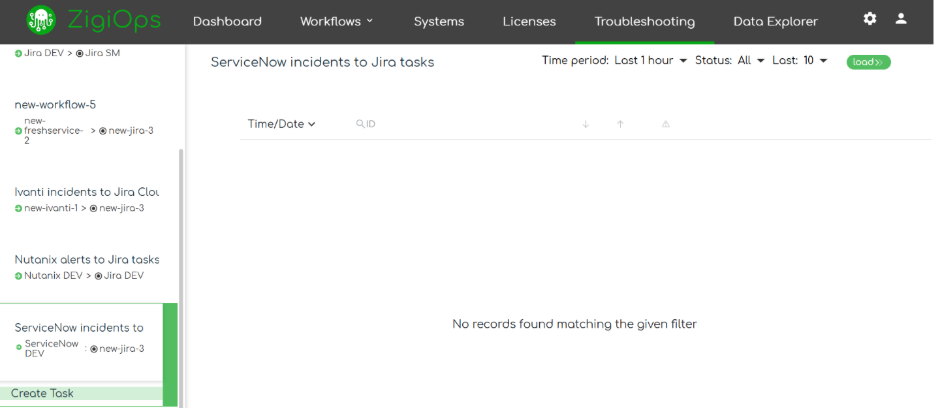
Even with a no-code tool like ZigiOps, a few best practices can make your integrations bulletproof:
- Validate System Permissions
Before activation, confirm API credentials, user roles, and certificate trust configurations. Missing privileges often cause failed syncs.
- Leverage Expressions
Use {lasttime}, {lastupdated}, and {lastcomment} to control sync frequency and prevent duplicate records.
- Use Conditional Filters
Only sync relevant incidents or projects by applying category or priority filters.
- Enable Monitoring Alerts
Use the built-in monitoring dashboard to track failed transactions and retry automatically.
- Plan for Scalability
For large-scale data exchange, deploy HA with Primary/Backup ZigiOps servers to ensure zero downtime.
- Start with Templates
ZigiOps ships with pre-built templates like ServiceNow Incidents to Jira Tasks. Use them as a foundation and customize field mappings as needed.

Conclusion: Secure, Scalable, and No-Code — ZigiOps Is Your Ideal ServiceNow Integrator
Integrating ServiceNow with Jira, Azure DevOps, or BMC Remedy no longer needs to be complex, risky, or code-heavy. With ZigiOps, enterprises get a secure, ISO-certified platform that connects tools in minutes - not months.
Its bi-directional data sync, no data storage, real-time monitoring, and high availability architecture make it the most trusted ServiceNow integrator for organizations that value control, compliance, and performance.
Ready to simplify your ServiceNow integrations?
Book a personalized demo to see how ZigiOps can automate your workflows across ITSM, DevOps, and ITOM tools.
Or, if you’d like hands-on experience, Request a Cloud Trial and test ZigiOps directly in your environment.
ZigiOps — integrating trust, speed, and security into your enterprise workflows.

